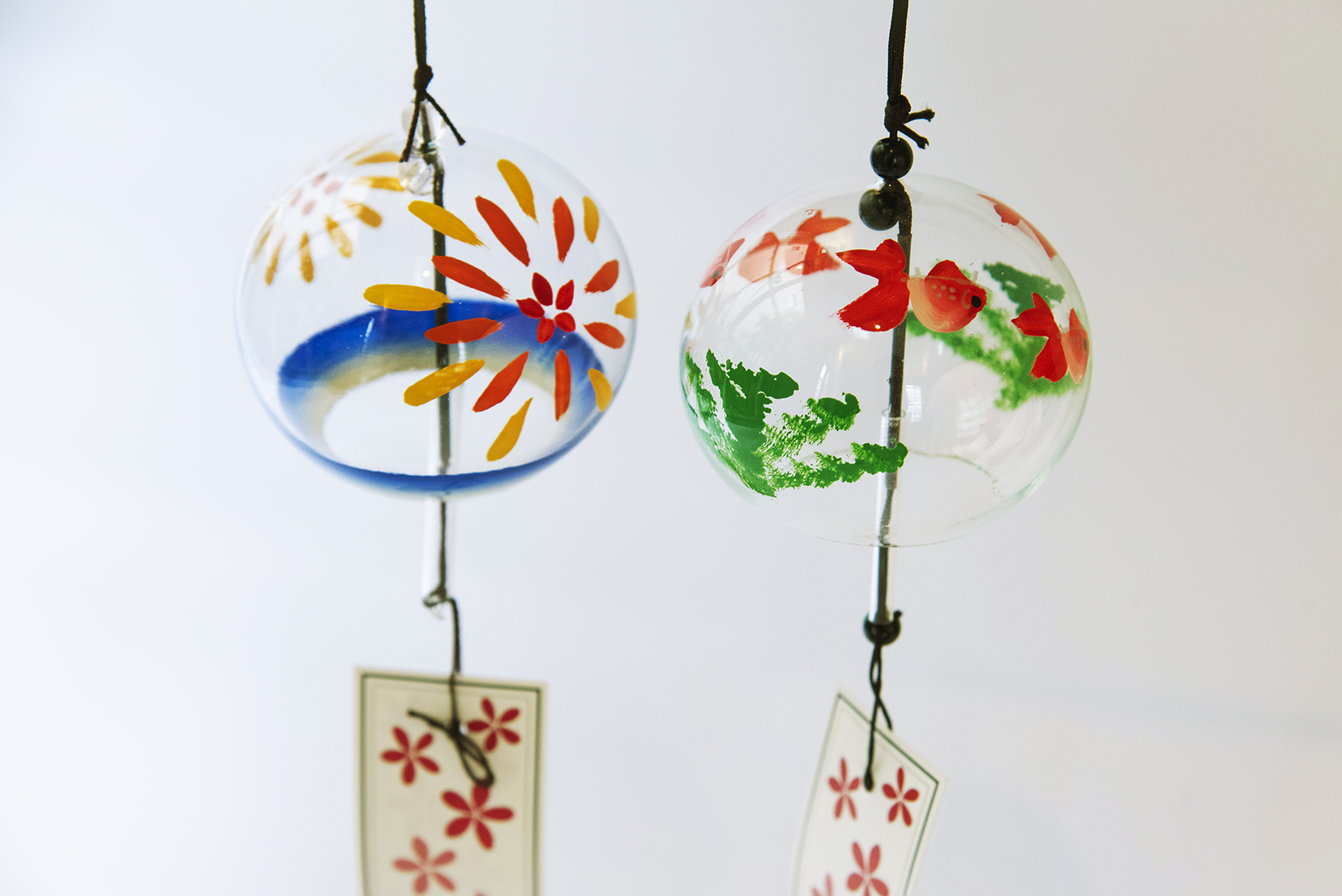2021.12.20
江戸風鈴の伝統を100年以上も守り続ける篠原風鈴本舗
Shinohara Furin Honpo: Continuing to Protect the Traditions of Edo Wind Chimes for Over 100 Years
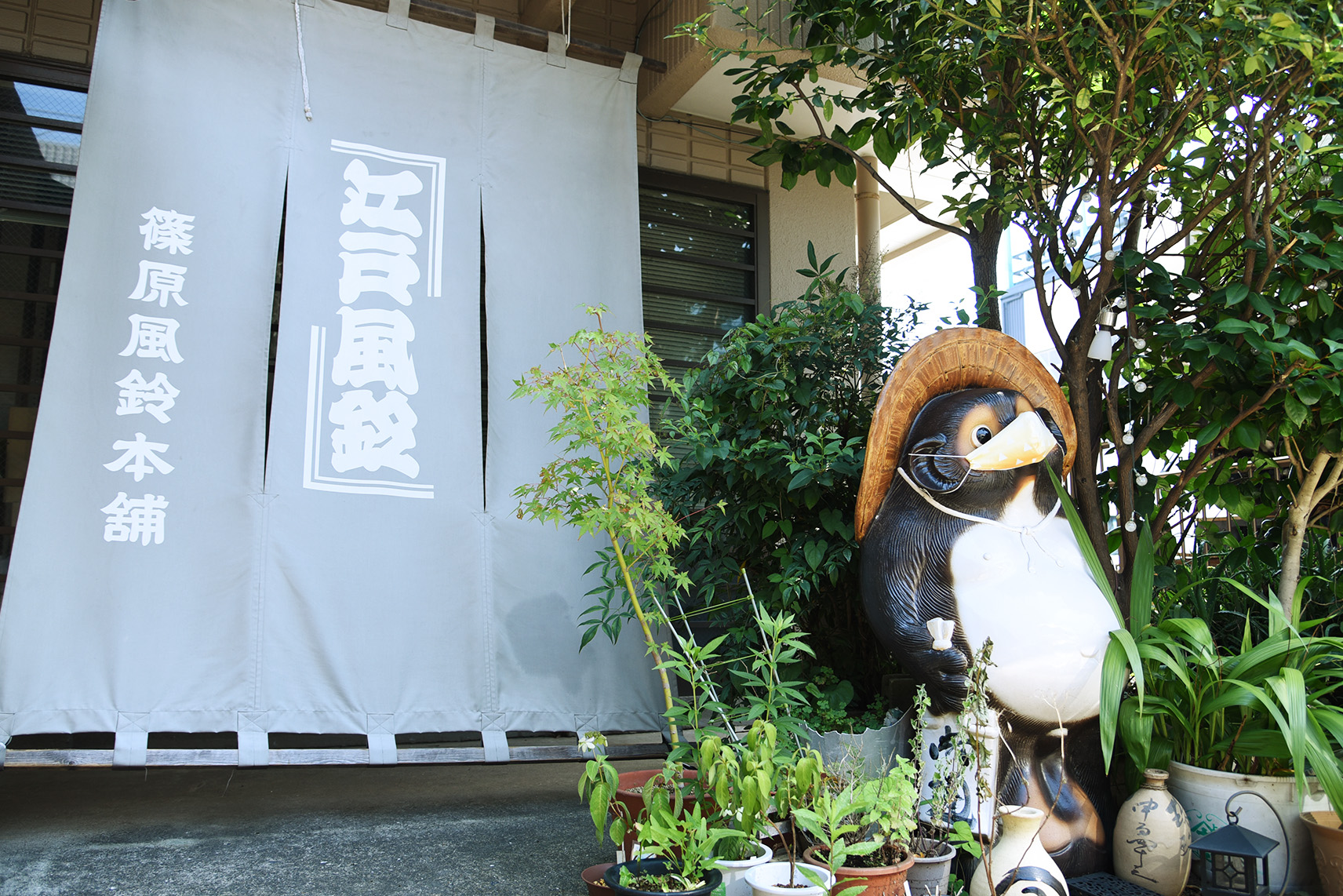
大正4年に創業してから100年あまり、“江戸風鈴”を製造・販売している篠原風鈴本舗が東京都江戸川区にあります。風鈴を製造する工場も併設されており、江戸時代と変わらない製法で風鈴を作り続けています。
初代の篠原又平さんは、酒井硝子の酒井氏に弟子入りし、その後「篠原硝子工藝社」として独立。以降、篠原儀治さん(二代目)、篠原裕さん(三代目)へと継承されて、現在は篠原惠美さんが代表を務めています。今でもご家族とお弟子さんで江戸風鈴の伝統を引き継ぎ、風鈴を作っています。
Shinohara Furin Honpo has manufactured and sold Edo wind chimes for over 100 years since its foundation in 1915 in Edogawa, Tokyo. It is jointly established with a factory that manufactures wind chimes. It has continued to make wind chimes with a manufacturing method unchanged since the Edo period (1603 to 1868).
Matahei Shinohara, the first-generation representative, became an apprentice of Sakai of Sakai Glass and later went independent as Shinohara Glass Crafts Company . Since then, the company has been inherited by Yoshiharu Shinohara (second-generation representative) and Yutaka Shinohara (third-generation representative). It is currently represented by Emi Shinohara. Even now, the Shinohara family and its apprentices are continuing the traditions of Edo wind chimes to make wind chimes.
緻密な技術で江戸風鈴の音色を生む職人技
そもそも江戸風鈴とは、二代目の篠原儀治さんが先代から受け継いだガラス風鈴を、昔の東京である「江戸」で、江戸時代から同じ製法で作られているという理由から「江戸風鈴」と名付けました。
実際に製造現場へお伺いすると、職人さんが黙々と風鈴を作っていました。江戸風鈴は、炉の中に高温で溶けたガラスを長いガラスの竿で巻き取り、息を入れながら膨らませていきます。まずは基本となる「口玉」という小さな玉を作り、そこにさらにガラスを巻き付け、本体となるガラス玉を吹き上げる二段階で作られています。これらの作業は全て型を使わない「宙吹き」という技法で行われています。職人さんの眼差しは真剣そのもので、手際よく作っている姿はまさに職人技と言えます。
10分ほど冷ましてから、包丁で口玉の部分を切り落としますが、音を良くするために鳴り口の部分をわざとギザギザにするのが江戸風鈴の特徴です。最後に絵を描き入れて紐を通し、鳴らすようにしたら完成になります。
口玉が作れるようになるのに3年以上、風鈴職人として一人前になるには10年以上もの修行が必要とされています。このような緻密な作業で、1日に最大でおよそ300個も作るそうです。
Craftmanship That Produces the Tones of Edo Wind Chimes with Precise Techniques
Edo wind chimes were originally given this name because Yoshiharu Shinohara, the second-generation representative, made glass wind chimes with the same manufacturing method inherited from his predecessors since the Edo period (1603 to 1868) in the old name for Tokyo of Edo.
In fact, when we actually visited the factory, the craftsmen were silently making wind chimes. Edo wind chimes are made by rolling glass melted at a high temperature in a furnace with a long glass rod. They are then inflated them by breathing into them. First, a small ball called the kuchidama that forms the foundation is made. Glass is then further wrapped around it and the glass ball that forms the main body is blown up to make these pieces in two stages. These tasks are performed with a technique called chubuki without using any mold. The gaze of the craftsmen is serious. The sight of them skillfully making these wind chimes can truly be called craftmanship.
The kuchidama part is cut off with a knife after cooling for about 10 minutes. The characteristic of Edo wind chimes is that the opening that makes the sound is deliberately serrated to improve the sound. Finally, pictures are drawn on them and they are threaded with string. They are completed when they ring.
It is necessary to train for more than three years to be able to make kuchidama and for more than 10 years to become a full-fledged wind chime craftsman. It is possible to make around up to 300 wind chimes a day with such delicate work.
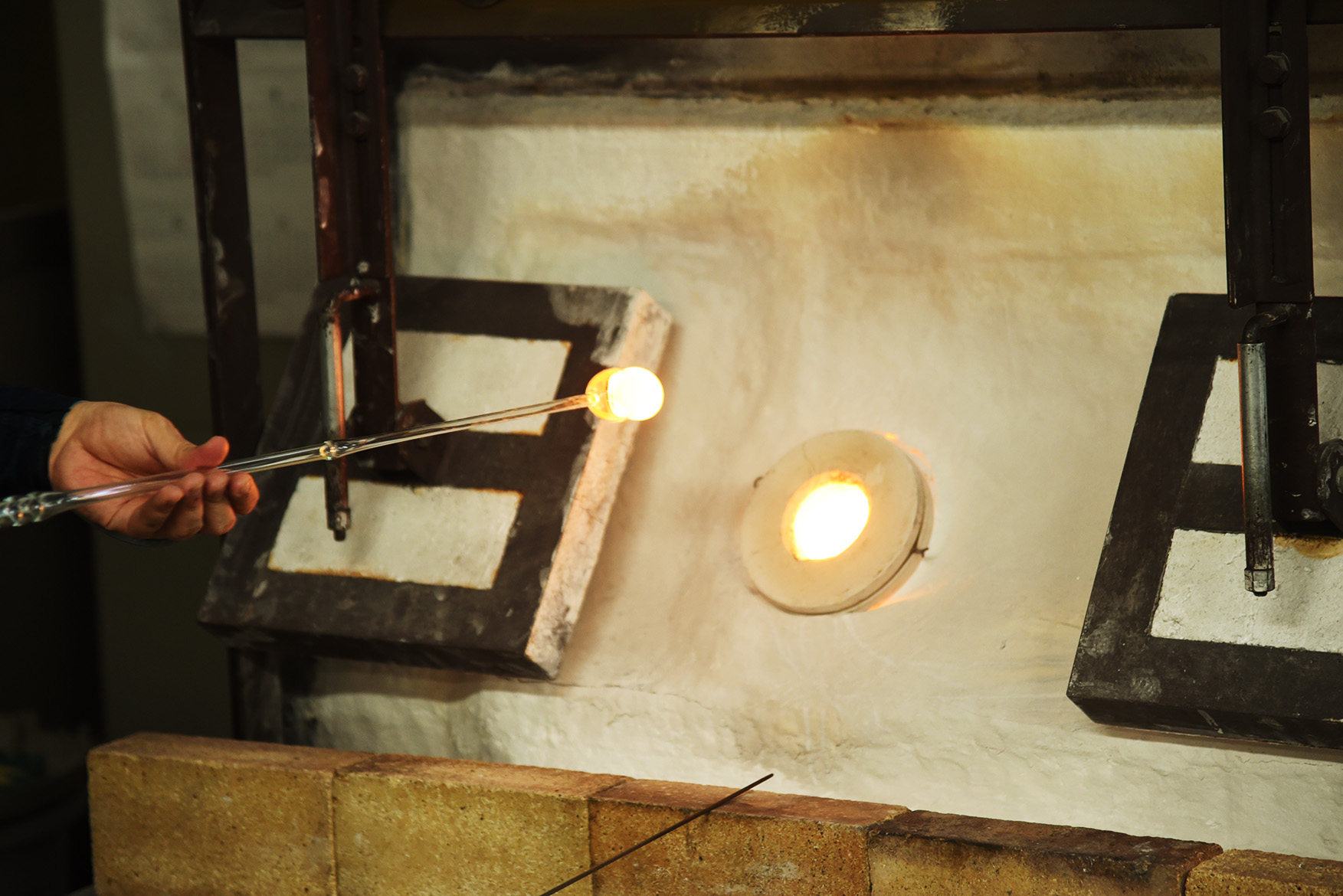
高温の炉の中で種硝子を溶かす
Melting the material glass in a high-temperature furnace
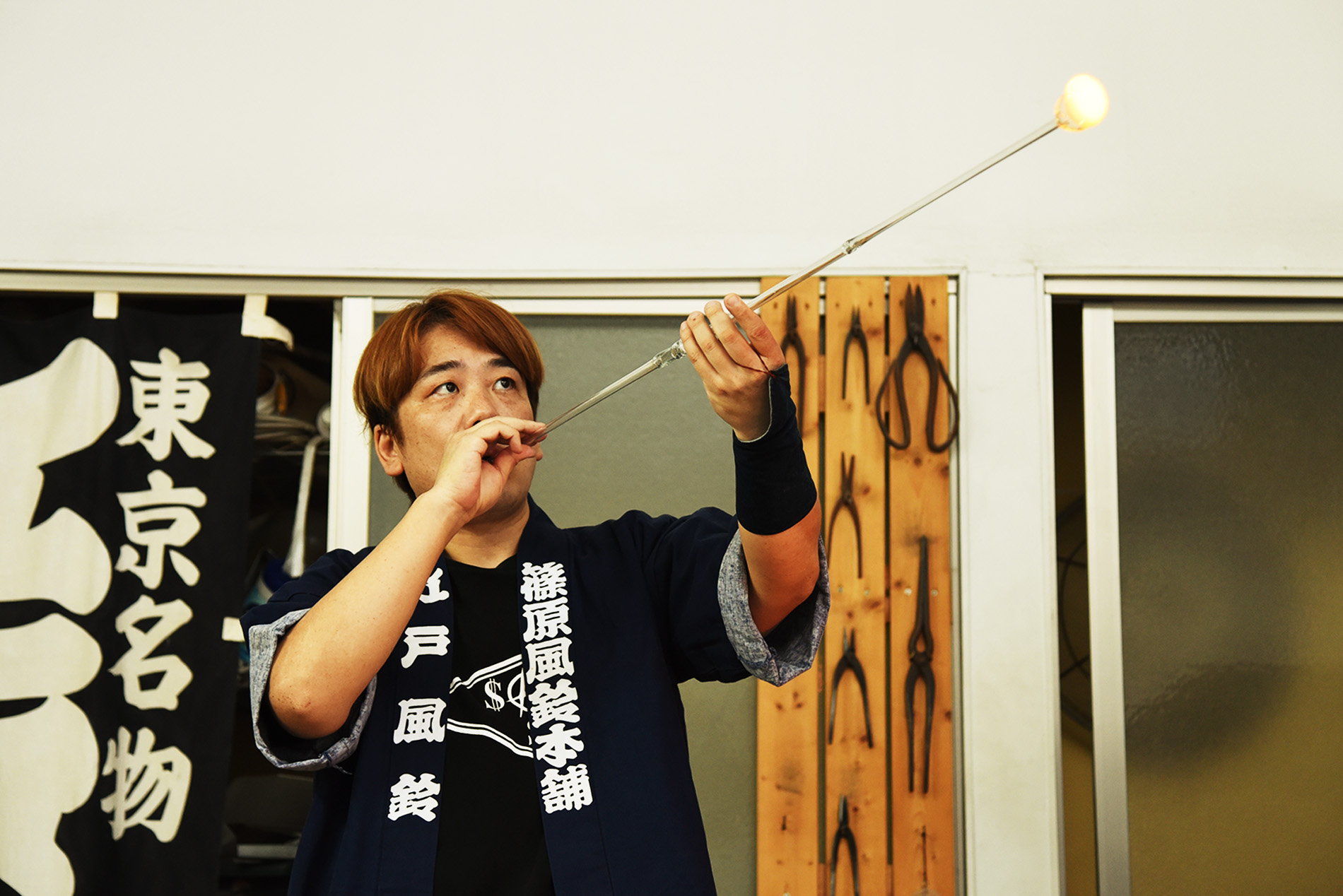
溶けたガラスを空中で型を使わず膨らます”宙吹き”
Chubuki to inflate the melted glass without a mold in the air
時代とともに多様化する風鈴のデザイン
形が出来上がった風鈴に絵を描く「絵付け」は、主に女性が担当しています。代表の篠原惠美さんにお話をお伺いしながら、絵付けの様子を見させてもらいました。
篠原惠美さんは、三代目の篠原裕さんに嫁いだのを機に江戸風鈴の道に入りました。最初は夜遅くまで風鈴を作る毎日に慣れなかったようですが、1年ほど経つと仕事のサイクルを掴めるようになったとのことです。
絵付けには、顔料を油で溶いた塗料を使い、刷毛でガラスの内側から描いていきます。この内側から絵を描いていくのも江戸風鈴の特徴で、絵の具が剥がれないよう長持ちするために内側に絵付けを行います。また、絵付けに使う道具は、絵の種類や大きさによって使い分けているとのことです。
「風鈴に使われる色も時代と共に変化がある」と篠原惠美さんは話します。例えば、昔は魔除けとして風鈴が活用されることが多くあったため、圧倒的に赤色が使われていました。今はアニメとのコラボレーション風鈴などデザインも多様化しているとのことです。そのため、昔は数を多く作ることがメインでしたが、最近は絵の細かいデザイン性が見られるため、使用する色の数も増加し、絵の完成度の高さも求められるようになっています。
Design of Wind Chimes: Diversified with the Times
The painting to draw pictures on the fully-shaped wind chimes is mainly the responsibility of women. We were allowed to see these women drawing on the wind chimes while speaking to the representative Emi Shinohara.
Emi Shinohara began her involvement with Edo wind chimes when she married the third-generation representative Yutaka Shinohara. It seems that she was not used to spending every day making wind chimes until late at night at first. However, she was able to grasp the work cycle after about a year.
The women paint by drawing from the inside of the glass with a brush using paints for which the pigment has been dissolved with oil. This drawing pictures from the inside is another characteristic of Edo wind chimes. The wind chimes are painted on the inside to last for a long time without the paint coming off. In addition, the tools used in the painting are divided by type and size of drawing.
“The colors used in wind chimes also change with the times” says Emi Shinohara. For example, wind chimes were often used as charms against evil spirits in the old days. Therefore, red was used overwhelmingly. The designs have also diversified. Nowadays, they include collaborations with animations. Wind chimes were mainly made in large quantities in the olden days. However, recently, it is possible to see detailed picture designs. Accordingly, the number of colors has also increased and a high degree of perfection in the pictures is required.
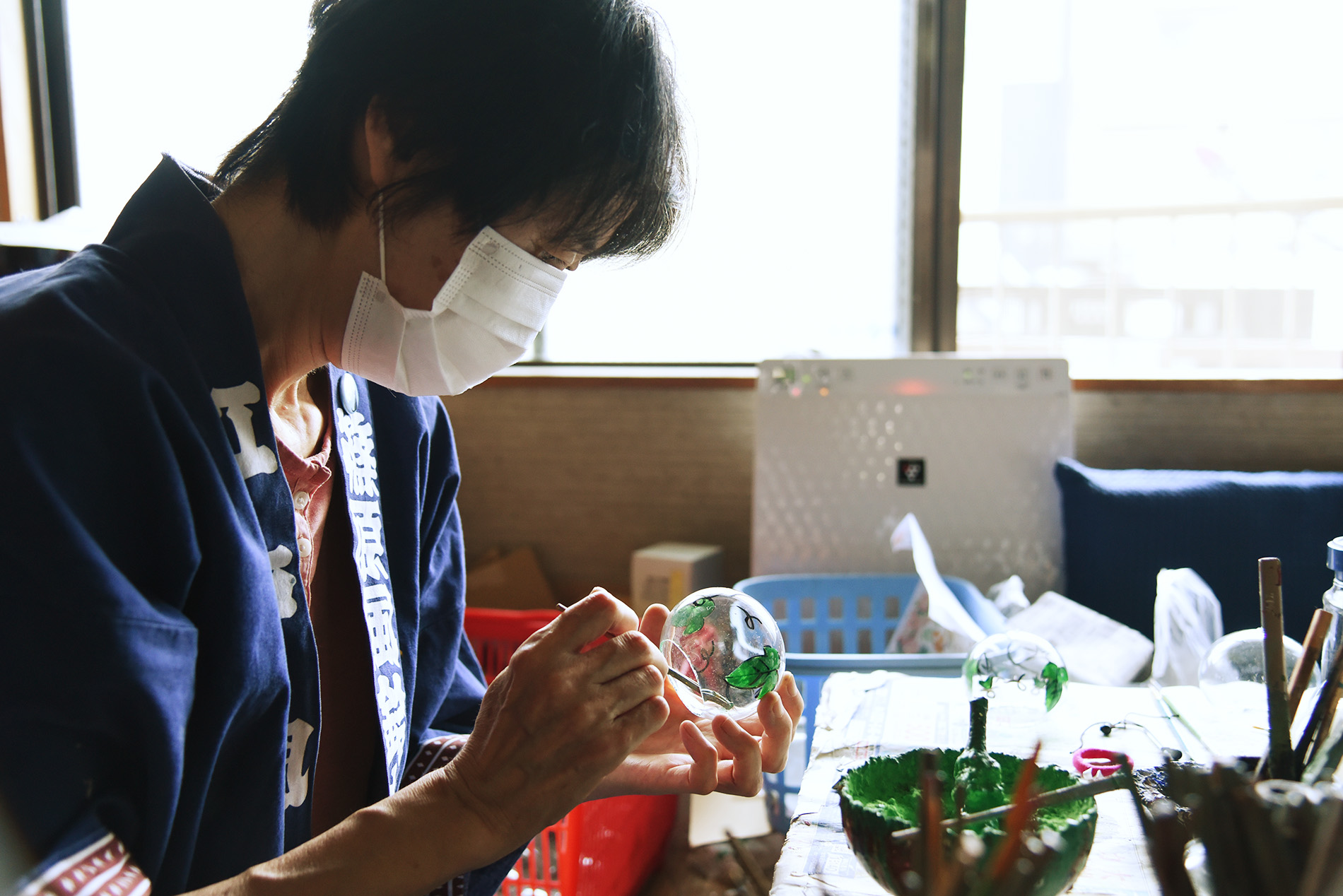
絵付けを行う取締役の篠原恵美さん
Emi Shinohara – a Director who paints
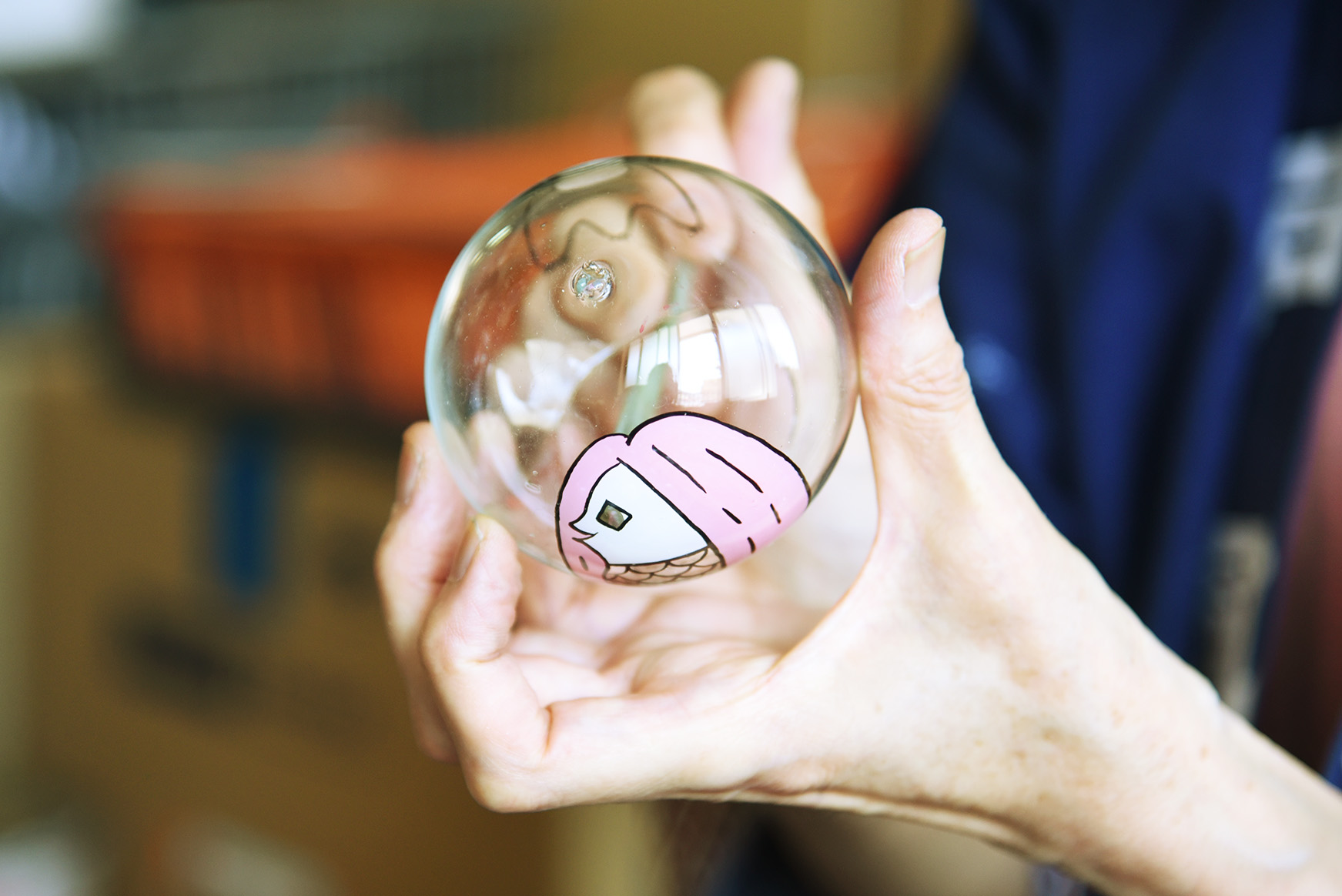
今流行りのアマビエを描いた風鈴
Wind chime depicting the trendy amabie monster
一つ一つ違う絵と音色から風情を感じられる江戸風鈴
職人さんの手作業で作られる江戸風鈴。一つ一つが手作りなので、同じ形・同じ絵柄でも異なる音色を奏でます。つまり、世界で一つの風鈴が作り続けられているのです。
今でも大切な人に贈り物として江戸風鈴を渡すお客さんがたくさんいるようです。自分好みの絵を見て楽しみ、唯一無二の音色を聞いて落ち着くこともできる贅沢なひととき。100年以上も守り続けられている江戸風鈴から日本の風情を感じてみてはいかがでしょうか。
Edo Wind Chimes That Allow You to Experience Elegance from the Individually Different Pictures and Tones
Edo wind chimes are made by hand by craftsmen. Each one is handmade. Therefore, even those with the same shape and pattern produce different tones. In other words, one-of-a-kind wind chimes continue to be made in the world.
Many customers give Edo wind chimes as presents to those who are important to them even today. Enjoy a luxurious time in which you can enjoy looking at your favorite pictures and calm yourself down by listening to unique tones. Why don’t you experience the elegance of Japan from Edo wind chimes that have been protected for more than 100 years.
